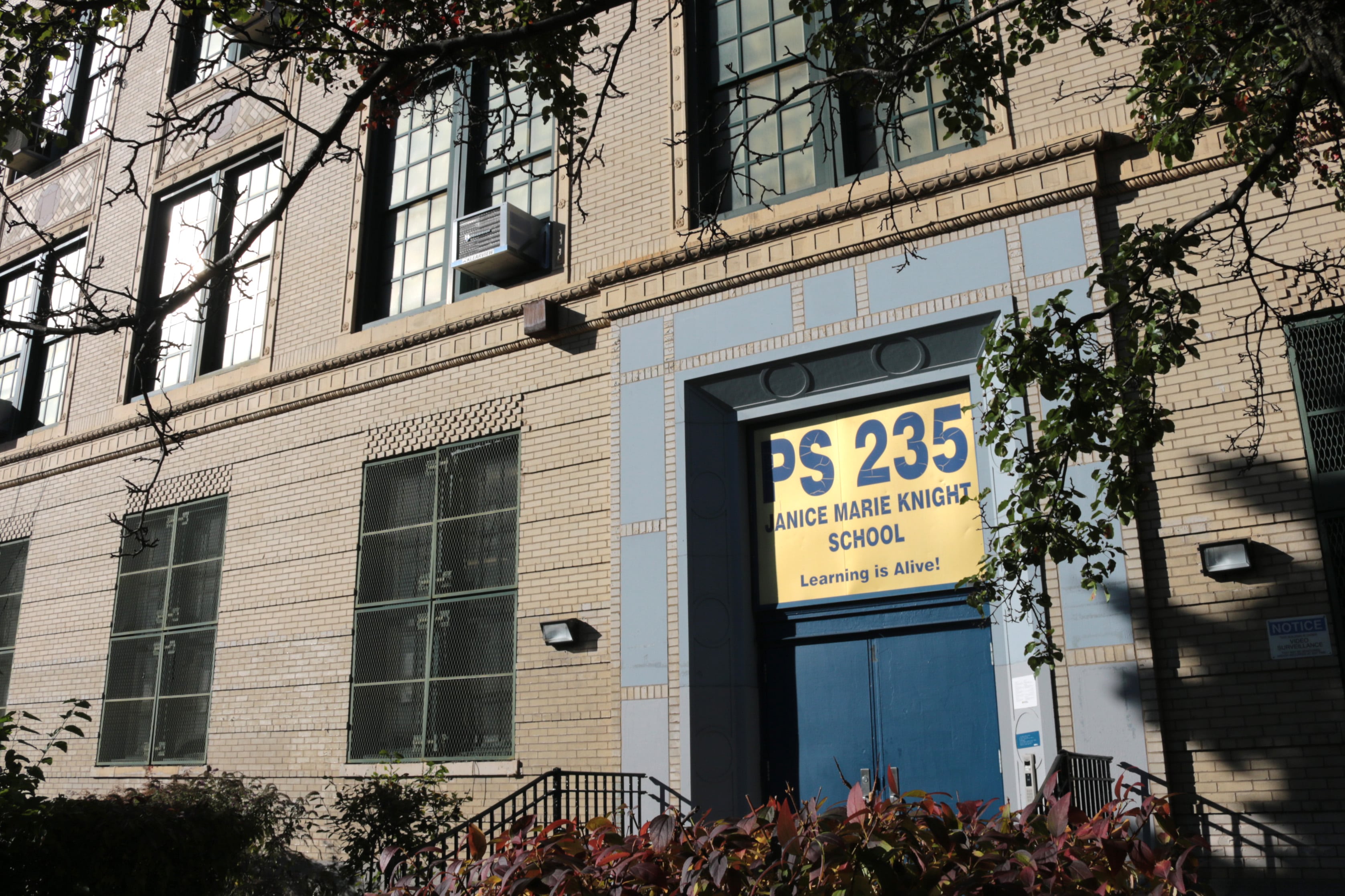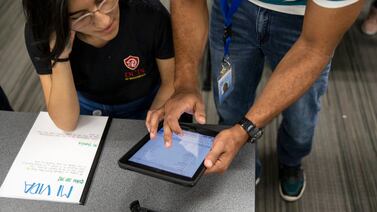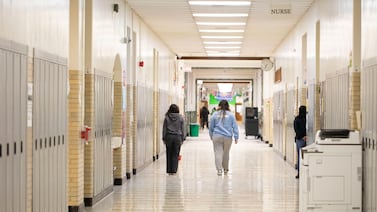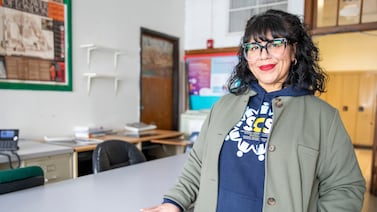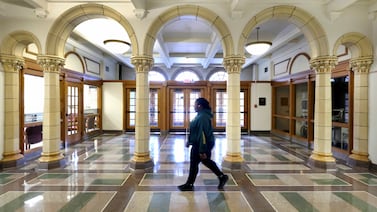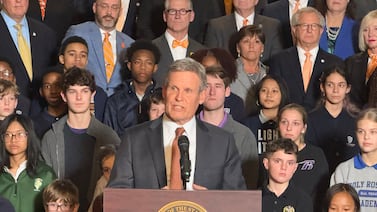Sign up for Chalkbeat New York’s free daily newsletter to get essential news about NYC’s public schools delivered to your inbox.
When mayoral frontrunner Zohran Mamdani reiterated his intention in Thursday night’s debate to eliminate gifted programs for the city’s youngest students, his opponents quickly shot back with promises to move in the opposite direction.
Curtis Sliwa and Andrew Cuomo pledged to open up more gifted classes.
“We don’t have enough slots,” said Sliwa, the Republican nominee, who pledged to double the size of the kindergarten program.
Cuomo, the former New York governor running as an independent, touted his plan to expand gifted and talented programs.
Meanwhile, a group of state and city lawmakers are hoping to go even further, introducing legislation last week that would force the Education Department to scale up gifted classrooms across the city.
But funneling more students into gifted classrooms, which disproportionately enroll white and Asian American students, might be easier said than done.
Three years ago, Mayor Eric Adams made a similar pledge to expand accelerated learning opportunities. The city opened dozens of gifted programs in underserved areas, with 38 schools hosting new gifted programs for rising third graders and eight more programs for kindergarteners, which has historically been the main entry point, according to a Chalkbeat analysis of Education Department data.
Supporters of gifted programs argue these classes help keep families in the public school system. Yet the overall number of students formally admitted to gifted programs citywide fell by more than 1,000 between 2019 and 2023, the Chalkbeat analysis found.
To fill empty seats, schools have moved students to gifted classrooms even if their families didn’t apply, more than offsetting the decline. With those students included in the total, nearly 18,000 students, about 5% of elementary students, were enrolled in gifted classes last year, an increase of about 2,000 children since 2019, department officials said.
New programs are slow to gain traction with families
According to city data, 44 of the schools offering the program — around a third of the citywide total — had fewer than 18 students enrolled in at least one of their gifted classes last year. Over half those schools were newer programs, Chalkbeat’s analysis found.
Experts and educators point to several factors that have made it difficult to grow the program through the formal admissions process. Many families don’t know gifted tracks are available. Another major reason: The third grade entry point adds logistical hurdles for families.
“It’s harder for parents to make a decision to change schools in third grade because of friendships, because of siblings, because of convenience and location reasons,” said Allison Roda, an associate professor at Molloy College who has studied the city’s gifted program.
An Education Department spokesperson said the agency has tried to make it easier for families to learn about and apply to gifted programs by making it part of the regular kindergarten application process.
Adams argued it is fairer to assess students for gifted programs after they’ve had a few years of formal schooling, and experts have criticized the city’s practice of tracking students at age 4, which few other school districts do. Mamdani has indicated he plans to keep the program starting for third graders.
It can take time for schools with new gifted offerings to establish enough of a reputation to attract applicants from other communities, Roda said, noting that some white families have expressed reluctance to accept a gifted seat if it means switching to a school that is predominantly Black and Latino.
About 62% of students in gifted classrooms are white or Asian American, even as they represent just 35% of the public school system as a whole. And while more Black and Latino students are now enrolling in gifted programs, they continue to be vastly underrepresented.
P.S. 279 in Crown Heights opened a gifted program starting in third grade in recent years, but had only admitted nine students as of 2023, according to city data. Outside the school on a recent weekday, several parents said they had no idea the program existed.
Caesar Ashley, a parent at the school, said his daughter was placed in the program last year even though the family never applied.
“If you do good on your work,” his fourth grader said, “they’ll put you in the class.”
Typically, second graders in the top 10% of their school based on report card grades are eligible for gifted programs that begin in third grade. In the wake of the pandemic, city officials eliminated an admissions test for kindergarten gifted programs and now rely on nominations from prekindergarten teachers.
Schools are allowed to move students into gifted classrooms without an application as long as they use “academic criteria,” a department spokesperson said.
Some principals may be reluctant to encourage their students to enroll in gifted programs elsewhere, because school budgets are directly tied to student enrollment. If a student leaves and isn’t replaced, that means fewer dollars for art, music, and afterschool programs.
Underenrolled gifted programs end up costing the city more. Schools usually cover the costs of gifted classes from their own budgets, which are based on student headcount. But for schools without enough students enrolled in gifted classes to cover the cost of a full-time teacher, the city chips in to make up the difference, paying out roughly $2.9 million to 44 schools last year.
Research on whether gifted programs benefit students who attend is limited, though one study focused on New York City found the programs can meaningfully boost reading and math scores, particularly among Black and Latino children. The Education Department’s own research on that question is less conclusive.
Families may not see clear benefits to sending their students to gifted programs, which sometimes move at a faster pace but often use the same curriculum as traditional classrooms, said Roda, who has interviewed numerous families about gifted programming.
“There’s skepticism among parents about what is actually different,” she said.
Michael Elsen-Rooney is a reporter for Chalkbeat New York, covering NYC public schools. Contact Michael at melsen-rooney@chalkbeat.org.
Alex Zimmerman is a reporter for Chalkbeat New York, covering NYC public schools. Contact Alex at azimmerman@chalkbeat.org.

